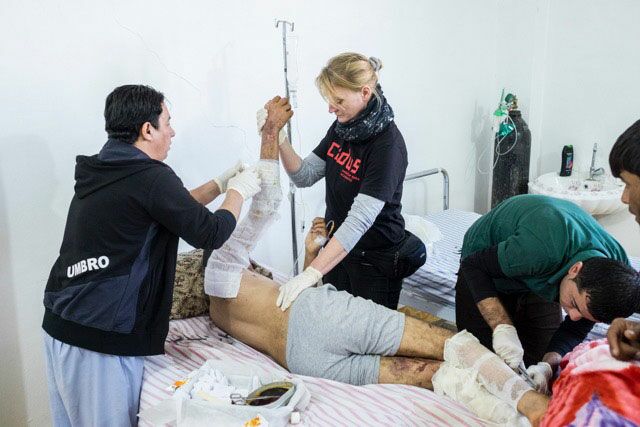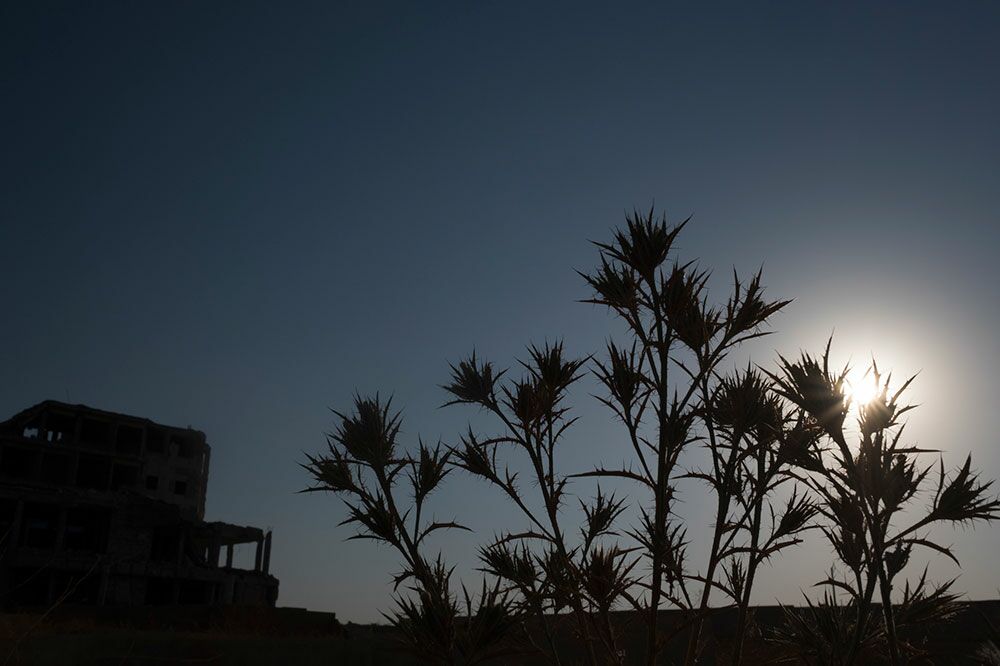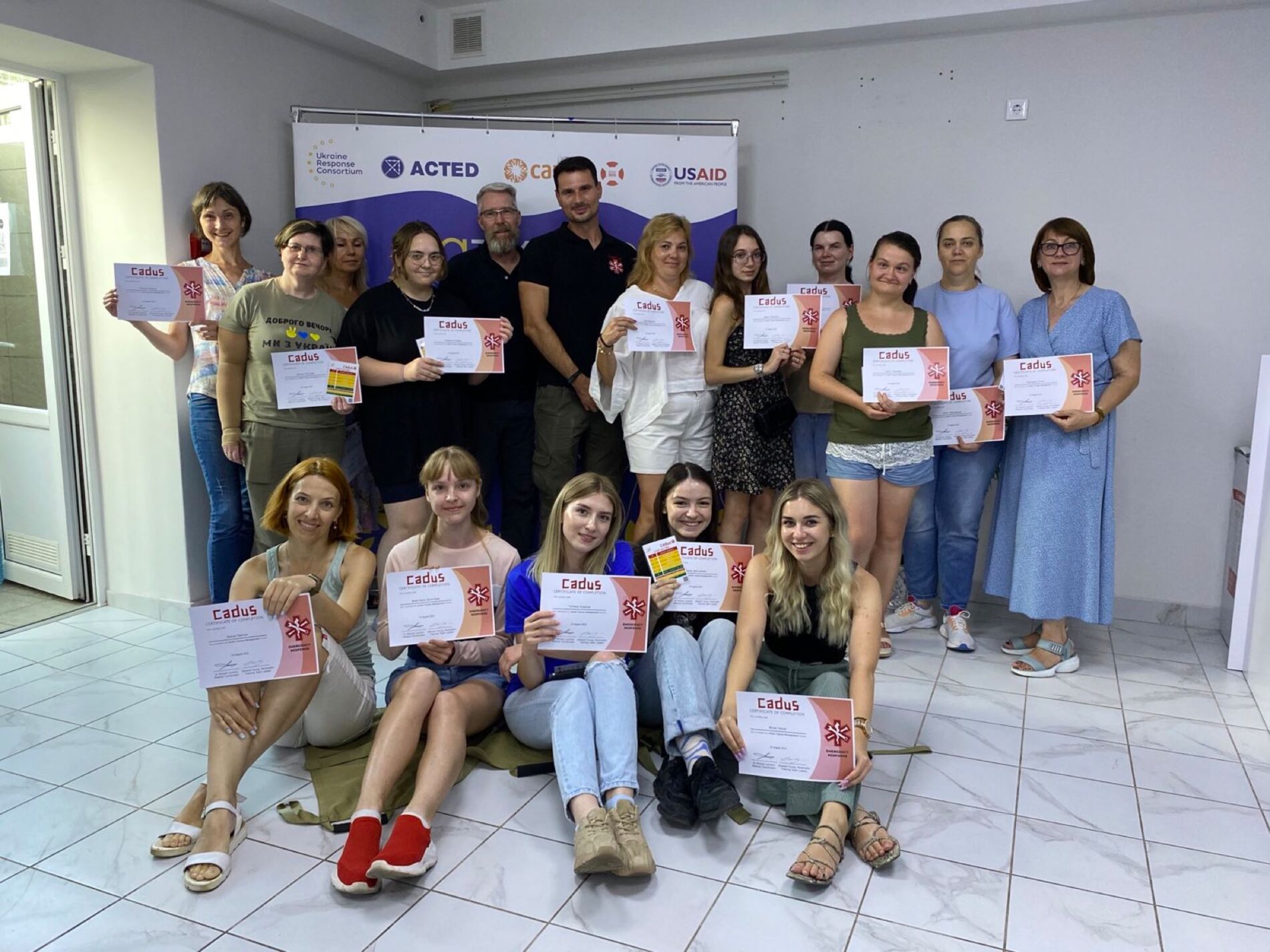
Two of our trainers surrounded by happy graduates of a course that they have completed with a certificate. Photo: CADUS
Each one teach one – medical trainings in Ukraine
Shortly after our first missions in Ukraine, the need for medical training in particular became obvious on the ground. In addition to the numerous medical novices from the population, who suddenly had to and wanted to treat injured people in times of war, specialists also asked for support in this also medically challenging situation. With eight courses and over 1500 participants: inside in over 11 cities in Ukraine, we have been able to establish a professional training program.
“The commitment of the people in Ukraine, under the circumstances of an all-defining war, is always impressive,” our training team regularly reports. Whether professional or volunteer rescuers, they all do their best to help their patients. Unfortunately, they are always pushed to their limits, because treating injuries from explosions, gunshot wounds, burns and mutilations is not an everyday task. In wartime, with limited resources and a high number of casualties, even more so. Especially the mortality of patients on the way to the hospital is extremely high. Even before the war, the rescue and health care system in Ukraine was not fully developed, and some of the equipment and training was outdated.
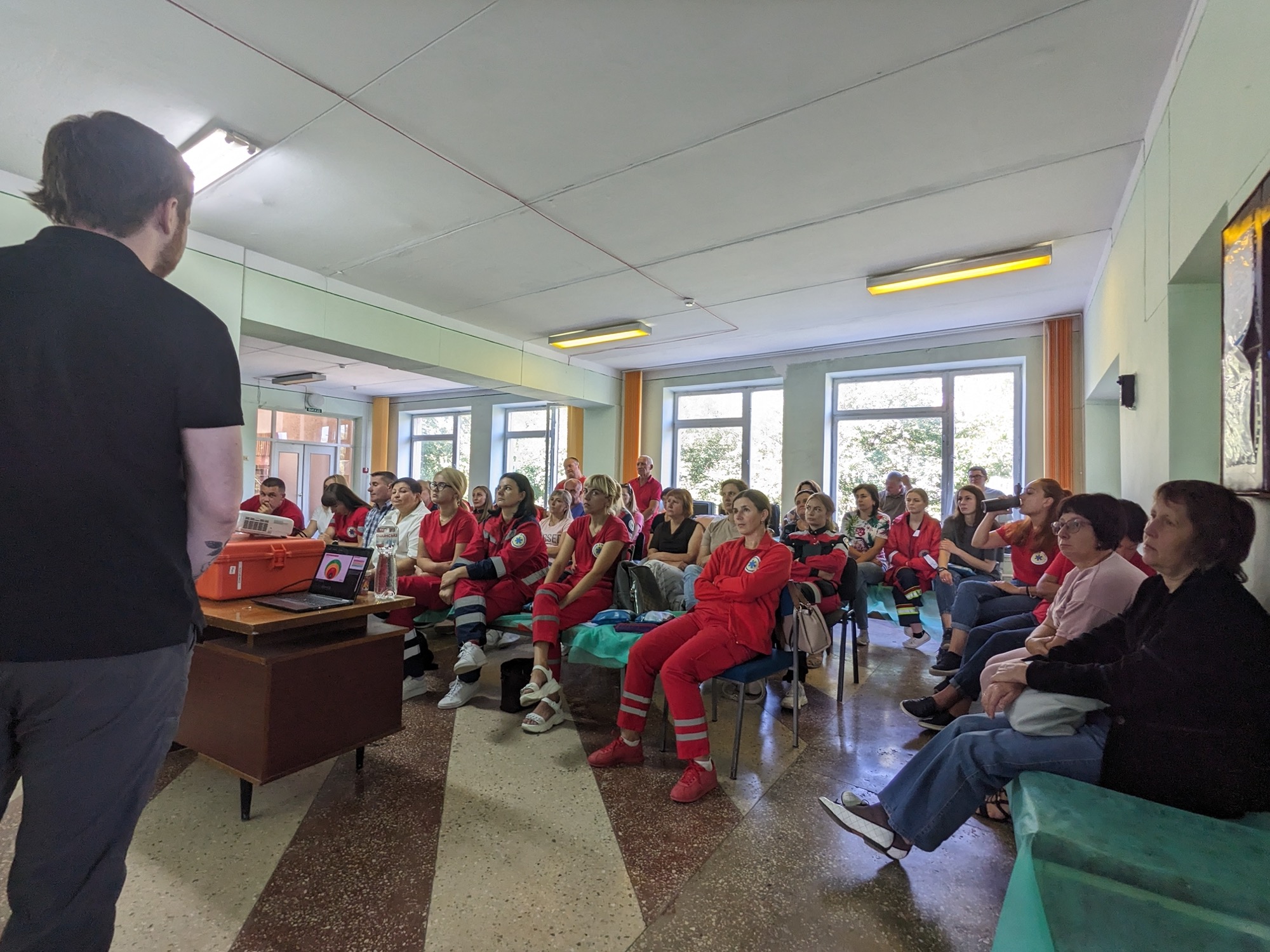 The composition of the course participants ranges from medical laypersons to professionals with years of experience. This mixture is particularly exciting for our trainers, as they have to try to convey the contents to everyone equally. Photo: CADUS
The composition of the course participants ranges from medical laypersons to professionals with years of experience. This mixture is particularly exciting for our trainers, as they have to try to convey the contents to everyone equally. Photo: CADUS
Material + Trained staff = Medical care
Tons of medical material donations have reached Ukraine since the beginning of the war from various countries and organizations. Among other things, we were able to hand over 23 ambulances, a self-built intensive care unit based on a coach and more than 75 ventilators to local rescue services. The problem of the lack of equipment was thus already contained. However, the best equipment is of no use if there is no one who can operate it.
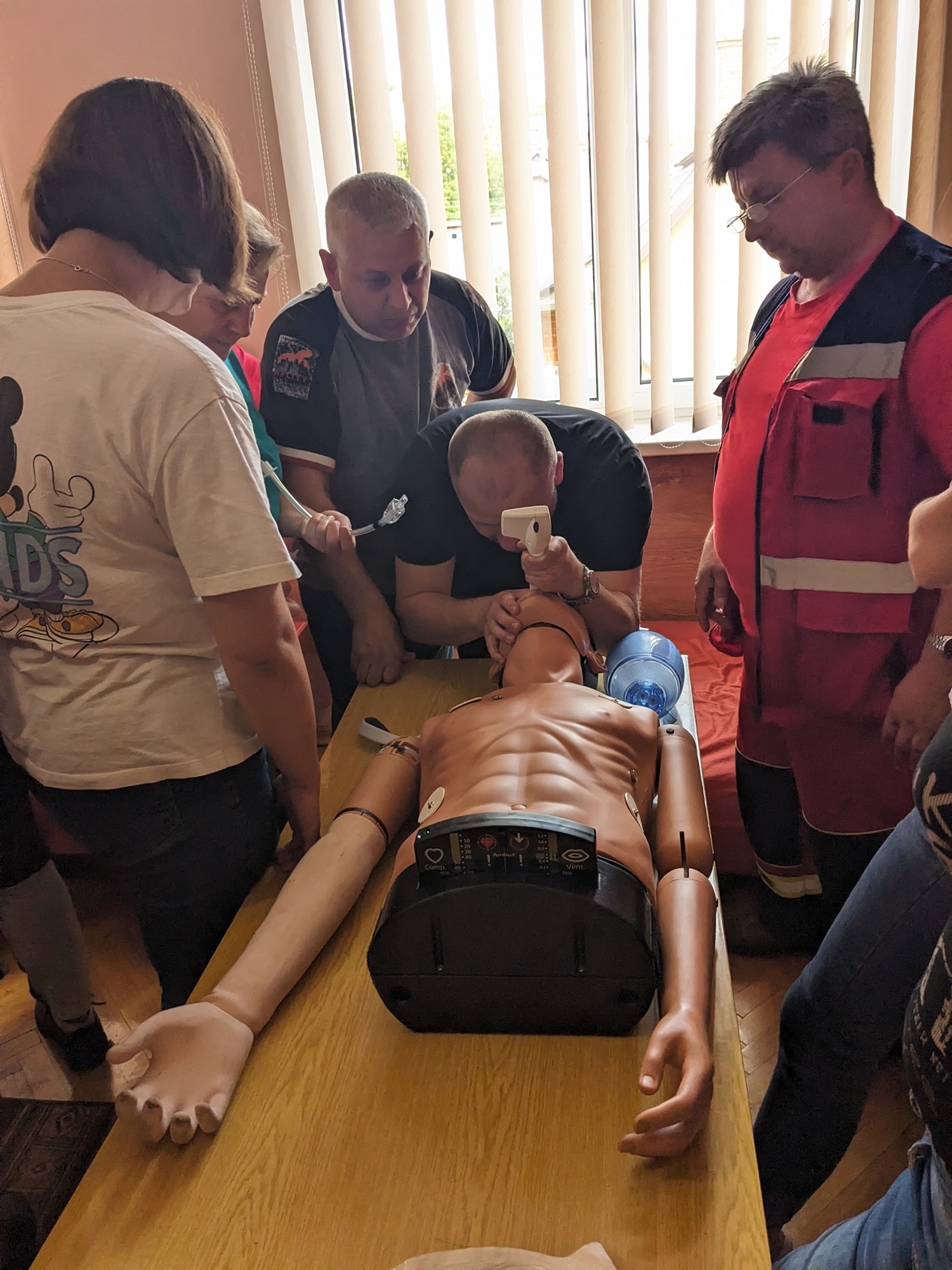 Speaking of material: in our training sessions, we have access to excellent training mannequins on which, for example, ventilation techniques can be practiced. The manikin also reacts to the measures taken, which means that a real emergency can be simulated very realistically. Photo: CADUS
Speaking of material: in our training sessions, we have access to excellent training mannequins on which, for example, ventilation techniques can be practiced. The manikin also reacts to the measures taken, which means that a real emergency can be simulated very realistically. Photo: CADUS
In our cooperation with several Ukrainian volunteer organizations and local hospitals, it became clear that training for the medical care of own injuries and of patients was urgently needed. What began with individual training sessions quickly developed into a full-blown professional program with numerous collaborations. The spectrum of the now eight courses ranges from training in life-saving emergency measures to the treatment of blast injuries and the handling of respirators.
Advantages for all involved
Our 7-member training team is in contact with rescue services, hospitals and organizations throughout the country and teaches as needed. As a result, over 1500 people have now attended training courses in over 11 cities. In addition to providing higher quality care to patients, the courses offer other benefits. We can build on the existing skills of the participants and thus provide some security and room for maneuver in a life reality that often leaves people helpless anyway. For medical personnel, we offer certified training that will be useful in their future professional lives, and we can offer newcomers who have or had to give up their previous employment because of the war a professional perspective.
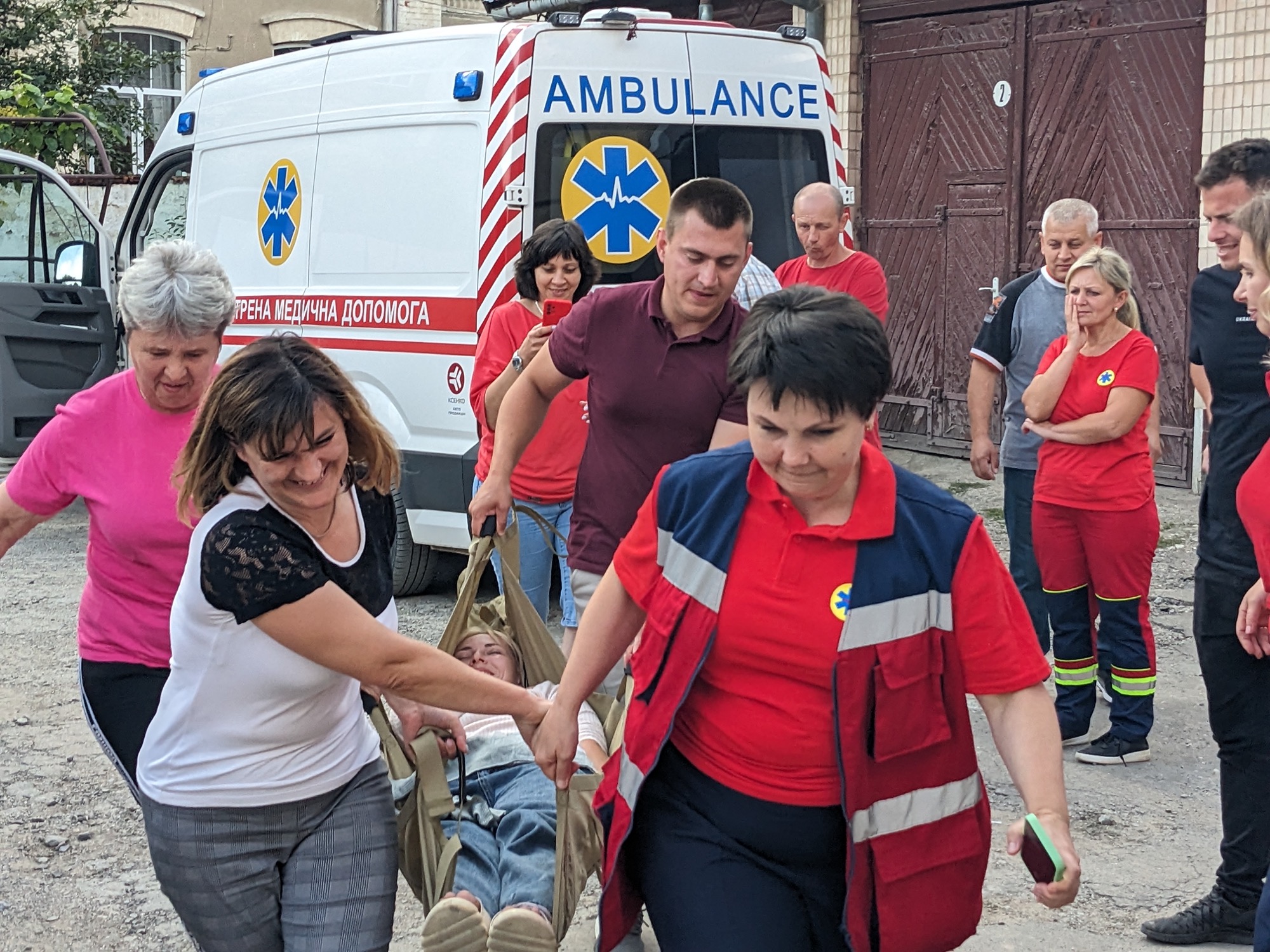
The courses also include practical exercises to apply the theoretical knowledge directly to the patient. Our participants are fully committed to their work. Photo and video: CADUS
“Train the trainer” and standardizations for sustainability
To support this aspect, we are working on certification of the courses within the framework of Continuing Medical Education (CME), which combines internationally mandatory training for medical personnel. Through cooperation with the largest medical training institute in Ukraine, Ternopil National Medical University, our course content will also be incorporated into the national standard in the future. In addition, the development of our program will focus more on the training of local trainers. After successful completion, these trainers will be able to offer courses on their own and thus sustainably improve the standard of medical training in the country.
Until the handover is complete, we will continue to provide training to support these dedicated, courageous people. The next goal – 2000 course participants – is already within reach. 2000 people who will be able to save patients in the future.
Published
Author: by Jonas Grünwald
By CadusPR
Stay informed about our missions, events and humanitarian emergency aid topics – with our newsletter!
Newsletter registration
I want to unsubscribe from the newsletter.


